‘Tis the season of lights, Santa Claus, and gift wrap, but that's not the point of Christmastime. Beyond the festive decorations, the season is really about celebrating the birth of Jesus.
Every December, Bethlehem fills with thousands of faithful Christians who gather at the Church of the Nativity to honor His birth. The atmosphere becomes electric as tourists and pilgrims are filled with excitement and devotion.
Having experienced this extraordinary city firsthand, I can assure you that visiting Bethlehem feels a bit surreal. And once you've been there, “O Little Town of Bethlehem” will never sound the same again.
Here's a list of 10 things that I learned from my trip. If Bethlehem is on your travel wish list, I hope they'll help you get more from your own visit.
1. You will need your passport.
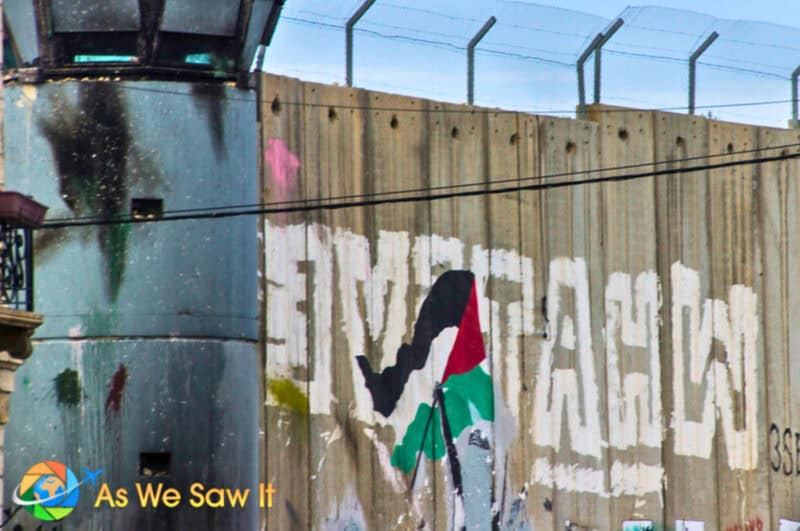
Regardless of whether you're planning an extended stay or doing a simple day trip from Jerusalem, all travelers must present their passports at the guarded checkpoint.
Be sure that your passport contains an immigration stamp from your point of entry. This stamp serves as proof of legal entry and may be required by the guards. But in case you're wondering, they won't stamp your passport at the Palestine/Israel checkpoint.
💡 PRO TIP: If you prefer not to have an Israeli stamp in your passport, immigration can stamp it on a separate piece of paper. When Dan and I landed at Ben Gurion Airport, the official did that without even being asked. Always keep it with your passport!
There's no rule against taking pictures inside the territory, but don't take photos of the checkpoint. (It's a standard security procedure.) To avoid any potential problems, don't even think of aiming your camera in the direction of the checkpoint!
👉 Want a guided experience? Consider this half-day trip from Jerusalem, which includes highlights like the Church of the Nativity, St. Catherine, and the Shepherds' Fields. There's also a specialized tour for cruise passengers.
2. Bethlehem is actually called Beit Lechem.
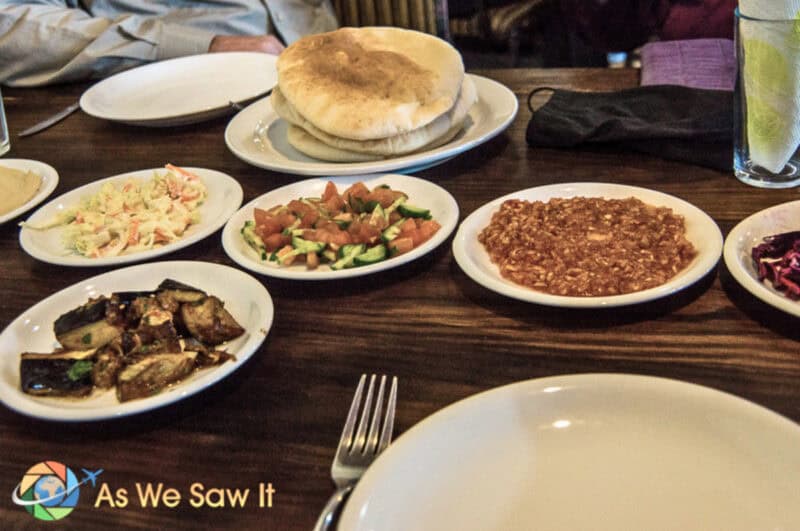
The real town of Bethlehem, that traditional site of Jesus' birth, is situated 10 km south of Jerusalem. But these days, most of its residents are Arab.
If you translate Bethlehem's name into English, Beit Lechem means either “House of Bread” (Hebrew) or “House of Meat/Flesh” (Arabic). Either way, the name is a pretty good clue that this is a great place for delicious Middle Eastern food.
Be prepared to spend your entire time in Bethlehem completely stuffed. Believe me, if there's one thing you can say about the Arab culture, it's that they know how to feed their guests!
3. Bethlehem's most visited site is the Church of the Nativity.
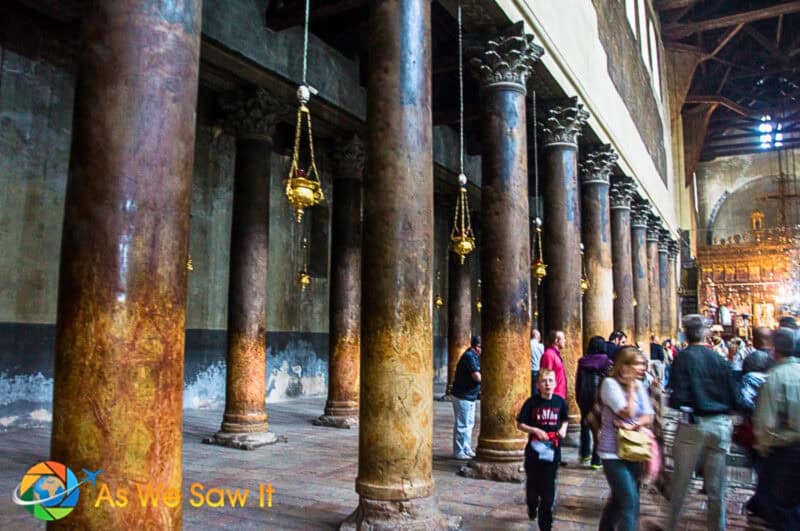
The Church of the Nativity in Bethlehem is the oldest church in continuous use in the Holy Land, not to mention one of the oldest churches in the world. It's also one of the most significant sites for Christian pilgrims, alongside Jerusalem’s Via Dolorosa and the Church of the Holy Sepulchre.
Long before the Church of the Nativity was built, early Christians gathered in a cave believed to be where Jesus was born. Many homes during this time were built adjacent to caves, and some were used as stables.
This sacred spot was a center for worship until Emperor Hadrian stepped in around 135 AD. He built a temple to the pagan god Adonis over the site, in an effort to squash the growing Christian presence.
But the story didn’t end there. In the early 4th century, Emperor Constantine reclaimed this important site for Christianity in the 300s, building a magnificent church that honored Christ's birthplace. The church has seen its share of renovations and additions since then, but you can still see traces of the original structure and cave.
4. The traditional site of Jesus' birth is located underground.
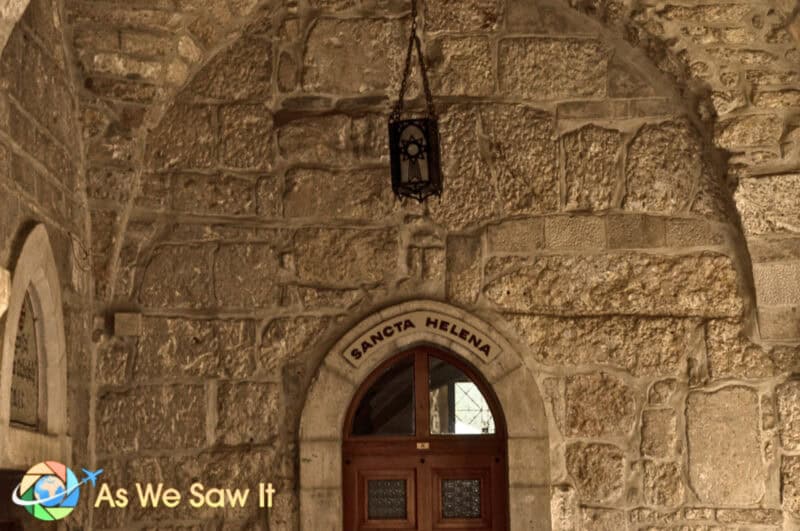
The dimly lit cave where Jesus is said to have been born is below ground. It measures only about 12 meters by 3 meters in size (~39 feet x 10 feet), and despite its small size, a floor, lamps, and icons have been added over the centuries.
The focal point is a 14-point silver star embedded in white marble that marks the exact spot where Jesus was actually born. (At least, that's where they say it happened.)
Partly because of the grotto's small size, there are always really long lines to see the star. If seeing the actual silver star isn't all that essential to you, go for the other interesting things that don't draw the same crowds.
💡 PRO TIP: While the Church of the Nativity has many accessible sections, visitors must navigate stairs to reach the Grotto of the Nativity. Thus, reaching the grotto itself can be a challenge for those with mobility limitations.
5. The church is jointly controlled by three Christian denominations.
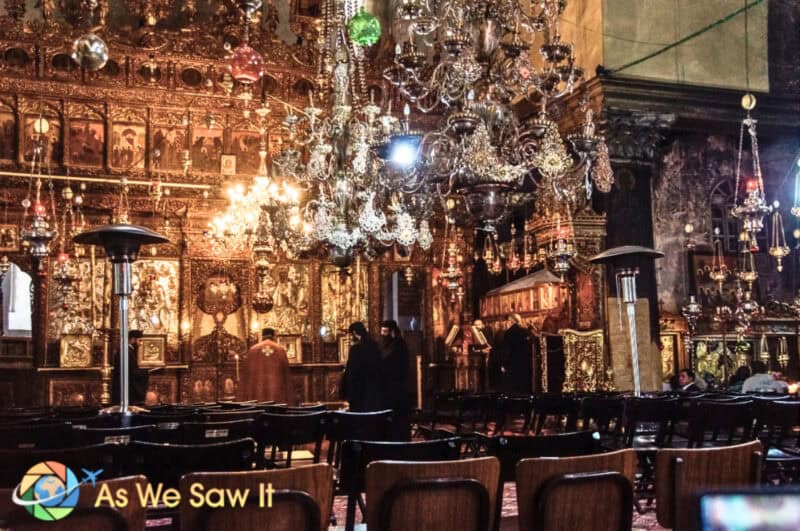
One of the fascinating aspects of the Church of the Nativity is that it’s jointly controlled by three Christian denominations: the Greek Orthodox, Roman Catholic, and Armenian Apostolic Churches. This setup, which has been in place since 1852, shows that people are willing to work together at this holy place.
While all have equal access to the Grotto, each denomination oversees different areas within the church. For example, the Greek Orthodox Church manages the Grotto of the Nativity, while the Armenian and Roman Catholic Churches have their own chapels.
Regardless of what you believe, it’s fascinating to see how different traditions honor God in their own special ways. It shows that there is a common commitment that transcends differences.
6. The Church of the Nativity is a UNESCO World Heritage Site.
The Church of the Nativity was designated a UNESCO World Heritage Site in 2012, highlighting its incredible cultural and historical significance as one of the oldest Christian churches still in use today and as a must-visit for pilgrims from around the world.
Originally built in the 4th century by Emperor Constantine and his mother, St. Helena, most of the current structure dates back to the 6th century under Emperor Justinian. Its stunning architecture blends Byzantine and Crusader styles, with beautiful mosaics and ancient columns.
UNESCO recognized this site not just for its religious importance but also for its role in the broader story of Christianity. The church complex includes nearby monastic buildings and pilgrimage routes, making it a vital symbol of Christian heritage and devotion that continues to inspire visitors today.
7. Bethlehem is also the traditional burial site of Rachel.
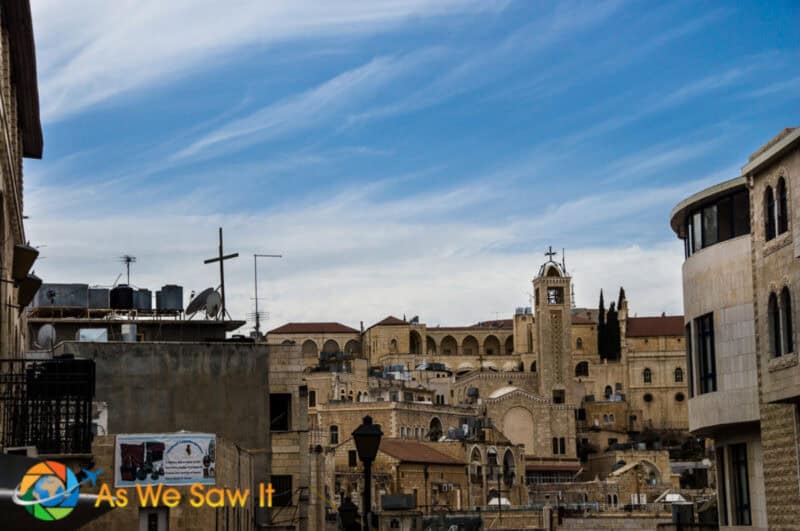
Bethlehem has a second pilgrimage site, the tomb of Rachel. Rachel was a Biblical figure, the favorite of Jacob's two wives.
Rachel is also beloved as the mother of Joseph and Benjamin, two heads of the 12 tribes of Israel. (Jacob was renamed Israel after he wrestled with an angel.) She died in childbirth with Benjamin and was buried on the road to Efrat, just outside Bethlehem.
ⓘ TIP: Rachel's Tomb is supposed to be open 24/7, but it is temporarily closed on Shabbats, holidays, and Sunday through Thursday between 10:30 PM and 1:30 AM owing to security concerns.
8. You can use U.S. dollars in Bethlehem.
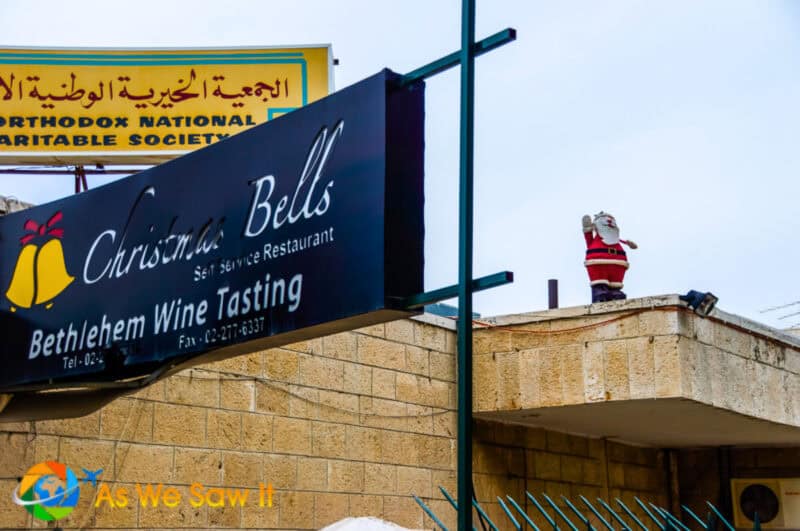
It's easy to make purchases in American dollars as well as Israeli shekels. This means you can buy souvenirs without worrying about exchange rates.
Even kids hawk massive bottles of water for $1 on the street.
Have fun shopping!
9. Bethlehem is famous for its handicrafts.
Bethlehem is renowned for its exquisite handicrafts, particularly those made from olive wood. The most famous items include intricately carved nativity scenes, which depict the birth of Jesus and are popular among visitors. Other popular items that show off the unique grain and color of olive wood are crosses, rosaries, and figurines of biblical figures.
Along with religious artifacts, you can also find beautiful artisan-crafted olivewood kitchenware, such as bowls and utensils, as well as the ubiquitous items like Christmas ornaments and coasters. Look for these handmade treasures in local workshops and shops throughout Bethlehem.
Even though prices may be lower than you can find elsewhere, a bit of negotiating can usually get you an even better deal.
💡 PRO TIP: In the Middle East, haggling is considered part of the shopping experience. Vendors view it as a friendly interaction rather than a confrontation, so don’t hesitate to engage in this cultural tradition while shopping for handicrafts and souvenirs!
10. Bethlehem Has More Than One Christmas Day
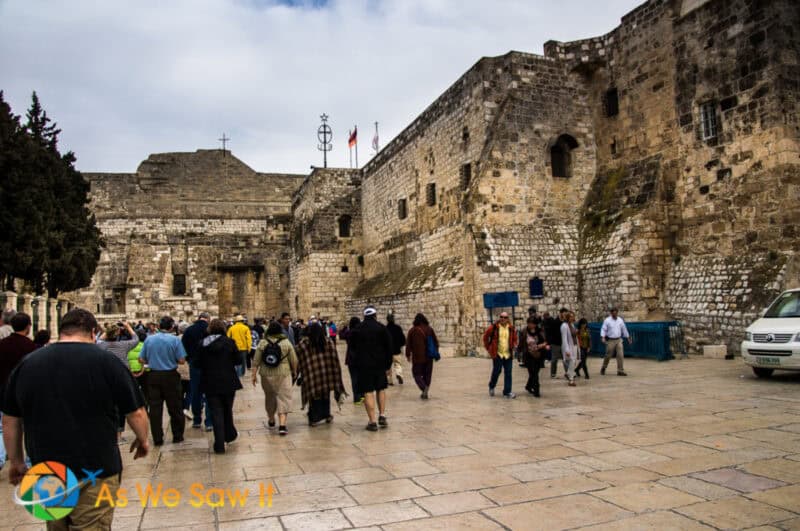
No kidding—Bethlehem celebrates not one, but three separate Christmases every year. Thanks to different Christian calendars, visitors get to experience a mix of unique traditions and faiths.
- Roman Catholic and Protestant Christmas (December 25)
- Greek Orthodox Christmas (January 7)
- Armenian Orthodox Christmas (January 18)
💡 PRO TIP: In 2024, Christian leaders in Bethlehem canceled Christmas celebrations due to the ongoing Gaza conflict. The Jerusalem Patriarchs and Heads of Churches deemed festivities inappropriate in light of the current situation. Visitors should expect a different atmosphere this year.
Plan your Bethlehem visit.
There are plenty of things to do in Bethlehem, so stay overnight if you can. Bethlehem is a short trip from anywhere in Israel. Invest in a good travel guidebook to get the most out of your visit.
You can even find an aerial view of Manger Square on Google Maps. Zoom, scroll around, and explore!



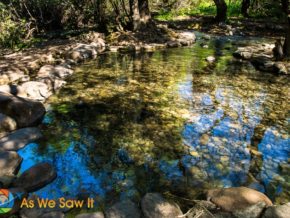
Very good advice indeed. We would also include reading up on the Palestinian struggle in order to prepare for many of the messages on the wall along the walk to the border crossing. There is also Omar Mosque that is worth a quick visit – they hand out head coverings if you don’t have one. We will never be able to hear the song “O Little Town of Bethlehem” again without imaging the actual town of Bethlehem now. 🙂
Dang, missed the Omar Mosque. I’d love to return and explore further afield. It sure is a lot easier when you’re not with a tour group.
Thank you for this very rare insight into the ancient city of Bethlehem. It’s definitely a big attraction for the Christians all over the world. We wanted to go to Israel several years ago, but gave up because of the unstable political environment there.
I hope you change your minds. Thousands of visitors annually prove it’s a safe destination. And the food … oh, the food!